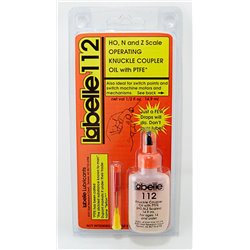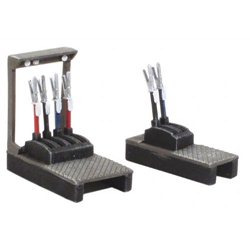There are a number of different options for attaching figures such as a horse and rider to a layout. Perhaps the...
No products
Product successfully added to your shopping cart
There are 0 items in your cart. There is 1 item in your cart.
Search Tips
What are point levers?
Point levers, integral components in railway infrastructure, facilitate the safe and efficient movement of trains between different tracks. On real life railways, these mechanical devices are used to manually change the alignment of a set of points (or switches) to direct a train from one track to another. A railway worker, known as a pointsman, typically operates the lever from a nearby control cabin or on-site. The lever, through a system of rods and linkages, shifts the rails' movable sections, thus guiding the train to the desired path. This method, while requiring physical effort and precision, is crucial for managing rail traffic, especially in complex track networks.
In modern railways, many point levers have been automated, controlled by sophisticated signalling systems from a centralised location, reducing the need for manual intervention. However, manual point levers are still prevalent in sidings, freight yards and heritage railways where automation is not practical or necessary. The tactile and visual feedback of manually operated point levers provides an added layer of reliability, ensuring the points have been set correctly. These levers are often robustly constructed to withstand the harsh outdoor environment and the considerable forces involved in moving heavy rail components.
Model railways also make use of point levers to control track switches. Modellers value these for adding authenticity and operational interest to their layouts. Model point levers function similarly to their full-size counterparts, albeit with simpler mechanics suitable for the smaller scale. They can be manually operated or connected to electric motors for remote control, reflecting the automation seen in contemporary rail systems. The use of point levers in model railways not only enhances realism but also provides hands-on experience in railway operations.
Click here to receive the tips weekly in your mailbox. You can unsubscribe at any time.










